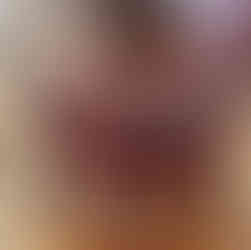From Bugs to Brew: Chong Shi Cha explained
- Neldon Hamblin
- Jan 8, 2024
- 4 min read
Updated: Apr 10
Hi friends!
Today I had the opportunity to try something quite unique: a tea so shocking to some that once they find out what it is, their stomachs might instantly turn. However, I promise you that once you suspend that initial culture shock, it is quite the delicious drink and I fully understand the craze behind it in China. So, without further ado, let's get into this review.
Today's tea is a 1960's chong shi cha, which essentially translates to caterpillar poop tea. That's right, a tea made from the droppings of caterpillars. If you're familiar with coffee, you've likely heard of kopi luwak, or civet coffee (which has a myriad of unethical harvesting practices surrounding it)- this, in essence, is a similar item, but produced by caterpillars instead. I know you might find that disgusting, but I was insanely impressed by this "tea." Before getting into the taste, lets go over how they make this tea.
How Chong Shi Cha is Made

The above image comes from the CCTV special "The Story of the Leaf," or a series they did in the early 2000s on different tea types and their production methods. This series devoted a good segment on the production of chong shi cha, which can be found here (in Mandarin).
Chong shi cha starts as a pile of tea leaves, generally something like a liu bao, which over time attracts caterpillars. These leaves can be mixed with different herbs, too, to alter the flavor profile of the final drink. In essence, the caterpillars eat the leaves and the farmers collect their droppings, which should be small, relatively uniform black balls. These droppings will then often be pan fried with honey or an herbed honey to improve the final product, though this can sometimes be skipped. Generally, chong shi cha undergoes two fryings: one to dry the droppings and a second with honey for sweetness. This results in a smooth, sweet and minty brew that can be reminiscent of herbal medicines used in traditional Chinese medicine (TCM).
As chong shi cha ages, it also becomes more valuable. Old chong shi cha can be just as expensive as old sheng, which also means that rampant fakery exists in the chong shi cha market. However, authentic aged chong shi cha should not have any funky flavors- instead, it should taste smooth and earthy, slightly herbal, and slightly cooling/minty. If you notice any bitterness or sourness, or any off aromas that veer more into the territory of being unpleasant and dropping-like, I would avoid drinking it. Good chong shi cha should smell like a damp forest floor or like a lakebed, that heavy minerally damp dirtiness, in a good way. Chong shi cha is also used in TCM as a remedy for its purported benefits to the stomach, though as that is an area I am less familiar with, I won't go into detail there and instead thought it worth the brief mention.
So, let's get into the taste, now, shall we?
Drinking the Chong Shi Cha

For my personal tastes, I took 1g of chong shi cha and put it into my strainer directly, brewing it as a sort of "poop pour over." I continued this, pouring more water over the droppings for each subsequent steep, getting about 5 nicely dark cups from this method. Other ways to brew include in a gaiwan, 1-5g of droppings, brewing until sufficiently dark for your taste, as well as in a tea bag at 1g to 500ml water for 3 to 5 minutes.

The rinse had a pleasant golden color to it. The flavor was where it was at, though, blowing my mind almost instantly. It tasted herby, minty, and leafy- almost like I were chewing on a fresh cut pine branch with mint leaves in my mouth. It is quite delicious with a nice underlying minerality to it, tasting slightly like damp forest floor.

The first steep was instantly much darker. The mintiness and camphor cooling flavors here were intense and enticing. What was also interesting was the slight saltiness to it, giving that minerality a nice boost. It is extremely sweet and pleasant to drink. There is also a nice melon-y note to it.

The second and remaining steeps all tended to be the same- slightly melony, nicely minty and cooling, but what was really noticeable was the energy. It has one of the most noticeable energies I've ever had- a very nice, grounding energy that hits the head early on and hard. It is really quite amazing. It reminded me of an aged yiwu sheng with how relaxing and heady it was.
Final Thoughts
For what it is, this is quite amazing honestly. It is intensely minty, woody, and quite delicious. I would seriously recommend this to anyone wanting a nice, unique experience. I could see it going amazingly with a bit of liu bao, too, with the sweetness and mintiness complementing the earthy notes of the liubao well. For the price at $10/10g, or a dollar per gram, I would recommend picking up some just to try. For its age, being 60 years old, it is quite amazing and I would seriously suggest trying it, if not for the experience alone.






